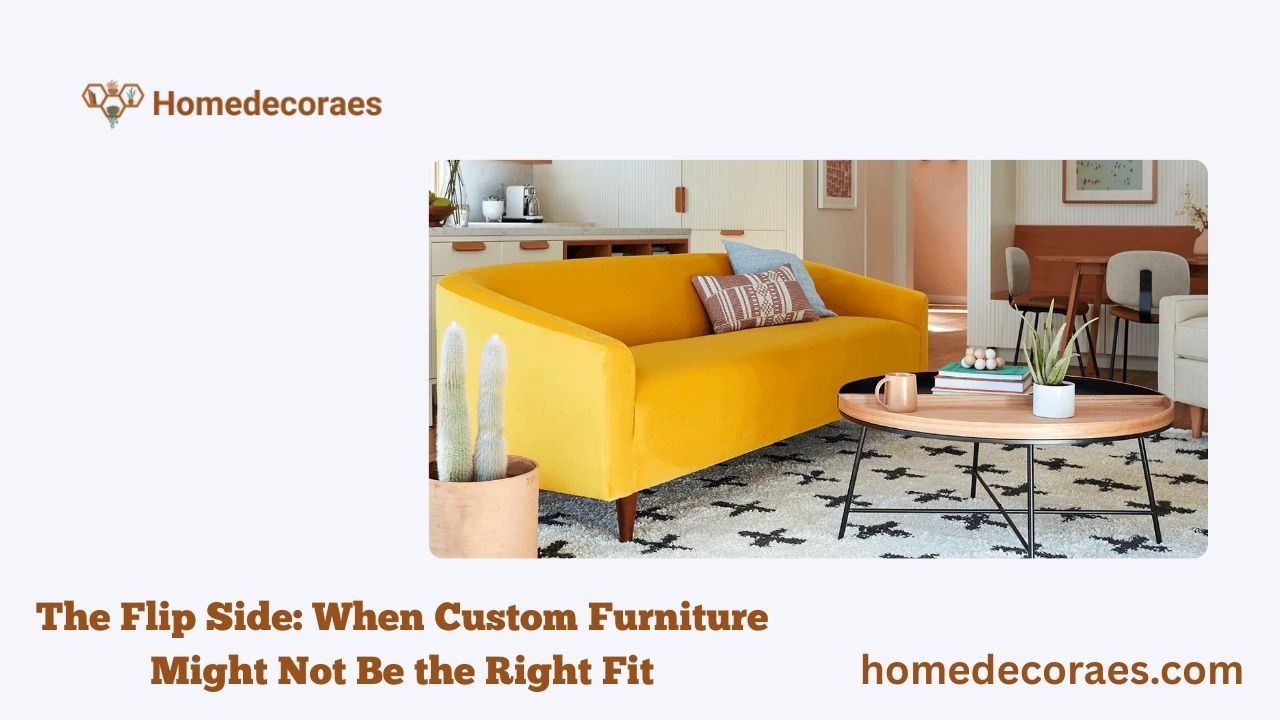When we think about furniture, we often picture shelves from big-box stores, coffee tables that wobble after a few months, or mass-produced sofas that look the same in every catalog. But what if there was another option—one that reflects your personality, fits your space like a glove, and lasts for decades? That’s where custom furniture enters the scene. The big question is: Custom Furniture: Is It Worth It?
Let’s dig deep into the real value of custom-made pieces. Is the higher price tag justified? What are you really getting in return? This article will walk you through the emotional, practical, and long-term sides of the investment. Think of it like chatting with a friend who’s been there—someone who’s wrestled with the decision and finally chose quality over convenience.
The Heart of Home: Why Furniture Is More Than Just Wood and Nails

Imagine walking into a room and feeling like it truly belongs to you. That’s the magic of custom furniture. It’s not just about having a place to sit or sleep—it’s about creating a space that speaks your language. Whether you’re in a cozy apartment in downtown Toronto or a rustic home in Nova Scotia, the right furniture makes a difference.
Unlike mass-produced options that are built for the average consumer, custom pieces are crafted with you in mind. That means no awkward gaps between your sofa and the wall, no cluttered corners, and no compromise on style.
It’s like wearing a tailored suit. Sure, off-the-rack might be cheaper and faster, but nothing feels—or looks—quite as good as something made just for you.
The Price Tag: Yes, It’s Higher—But Let’s Talk Value
Let’s be honest: custom furniture is more expensive upfront. You’re not going to find a $199 sofa here. But before you rule it out, think of what you’re paying for:
- Skilled craftsmanship
- Premium materials
- Tailored functionality
- Longevity
Here’s a quick comparison table to show the difference between custom-made and mass-produced furniture:
| Feature | Custom Furniture | Mass-Produced Furniture |
| Material Quality | Solid wood, premium fabrics | Particle board, synthetic fabrics |
| Longevity | 15–30+ years | 3–7 years |
| Fit for Space | Tailor-made for your room | One-size-fits-all |
| Design Flexibility | Fully customizable | Limited selection |
| Emotional Value | Often heirloom-quality | Disposable mindset |
| Environmental Impact | Often sustainably sourced | Usually mass-manufactured overseas |
| Price | High initial investment | Lower upfront cost |
So yes, custom furniture costs more, but it often lasts three to five times longer. Over time, that makes it more cost-effective, especially when you consider repair and replacement costs of cheap alternatives.
Unmatched Craftsmanship: A Labor of Love
Have you ever run your hand across a handmade table and felt the woodgrain dance under your fingers? That’s not just a surface—it’s a story. One of the strongest reasons people say “Yes” to custom furniture is the incredible craftsmanship that goes into each piece.
Most custom furniture makers treat their work like an art. They select the wood carefully, sand it by hand, and join the pieces in ways that are both beautiful and structurally sound. No shortcuts. No glue-and-staple jobs.
I once visited a small woodworking shop in Quebec where the craftsman, André, was building a walnut dining table for a young couple. It wasn’t just furniture. It was a wedding gift from the groom’s parents, designed to last through every holiday meal, spilled wine, and late-night laugh for generations. That’s the kind of care and emotion mass-market furniture simply can’t deliver.
Design That Fits Like a Dream
We all have that one space in our home that’s a little… awkward. Maybe it’s a narrow hallway, a corner that never fits anything right, or an open-concept space that feels too cold. That’s where custom furniture shines.
When you work with a designer or maker, they start with your space and your needs. They ask about:
- How much storage you need
- What kind of activities happen in the room
- Your favorite materials and colors
- How much natural light the room gets
It’s like working with a furniture architect. You don’t just get something that works—you get something that fits perfectly.
Imagine a bookshelf that curves with your wall, or a dining bench that doubles as hidden storage. These aren’t fantasy ideas. They’re real possibilities with tailored design.
The Joy of Personalization: Your Style, Your Rules

When you walk into most furniture stores, you get to choose between grey, darker grey, and maybe beige. But with custom-made furniture, every decision is yours. You want velvet in royal blue? Go for it. Prefer natural walnut over engineered veneer? It’s yours.
Personalization goes beyond color and finish. You get to control:
- Dimensions
- Shape and curves
- Storage options
- Hardware choices
- Leg style and height
- Upholstery textures
It’s not just about having more choices. It’s about expressing your personality through your home. That’s a powerful feeling.
When friends visit and ask, “Where did you get this?”, you don’t say a brand name. You say, “I designed it.”
Built to Last: The Long-Term Investment We Overlook
Think about how many times you’ve replaced something like a coffee table or nightstand in the last ten years. Probably more than you’d like to admit, right? The truth is, cheap furniture doesn’t age well. Scratches, wobbly legs, broken drawers—they all show up way too soon.
Custom furniture is built with longevity in mind. The joints are stronger. The finishes are more durable. And the materials? Often solid wood, real leather, or ethically-sourced fabrics. These pieces are meant to age with grace, not fall apart in frustration.
Plus, many custom furniture makers offer repair services or refinishing as part of their long-term commitment. So if a leg chips or the finish dulls, you don’t toss it—you restore it.
That’s not just good for your wallet. It’s good for the planet, too.
Sustainability and Conscious Living
More people today are asking: Where does my stuff come from? And that’s a good thing.
Custom furniture, especially when sourced locally, often supports:
- Small businesses and local artisans
- Sustainable forestry practices
- Low-emission production
- Ethical labor standards
Mass-produced furniture is usually shipped from overseas, made with questionable materials, and built in environments that don’t prioritize sustainability. When you choose custom, you’re not just getting a better piece—you’re making a more ethical choice.
It’s a quiet but powerful way to vote with your wallet for a better world.
The Sentimental Side: More Than Just a Table
Let’s get a little personal here.
Custom furniture has an emotional value that mass-produced pieces just don’t have. A handmade dresser can become your child’s keepsake. A custom dining table might be where your family celebrates every milestone. These pieces can be passed down—not because they survived, but because they meant something.
I still remember the rocking chair my grandfather had in his study. It wasn’t fancy. But it was handmade by his father, with initials carved into the base. Every time I sit in it, I feel connected—not just to the furniture, but to my family’s story.
This kind of legacy isn’t possible with furniture you throw away every few years.
The Flip Side: When Custom Furniture Might Not Be the Right Fit

As much as we love the idea of owning furniture that tells a story, it’s only fair to talk about the downsides too. Because let’s face it—custom furniture isn’t always the perfect choice for everyone.
First and most obvious: the price. It’s not cheap. A custom coffee table can cost five times more than a mass-produced one. And that’s just one piece. If you’re furnishing an entire home, the numbers climb quickly.
Then there’s time. Unlike walking into a store and bringing something home the same day, the design and build process can take weeks or even months. You’ll have consultations, revisions, and a production timeline. If you’re in a rush—or if you’re someone who changes their mind often—this can feel frustrating.
And let’s not forget about communication. If you’re not clear about what you want, or if the craftsman interprets your vision differently, you might end up with a piece that doesn’t match your expectations. That’s why collaboration and patience are key.
So yes, custom furniture is worth it—but only when you’re ready for the journey that comes with it.
A Tale of Two Sofas: One Real-Life Example
Let me share a story to put things in perspective.
A friend of mine—let’s call her Sarah—bought a mass-produced sofa for her condo in Vancouver. It looked great in the showroom. But after six months, the cushions lost shape, the frame started squeaking, and the material pilled. She ended up replacing it less than two years later.
Later, she invested in a custom-built sectional from a local maker. It took 10 weeks and cost nearly three times more. But five years in? The sofa still looks and feels brand new. The maker even included a lifetime repair guarantee.
It wasn’t just a sofa—it became a conversation piece. People walk in and say, “Wow, where did you find that?” And she proudly replies, “I designed it.”
That story says more than any statistic ever could.
So… Is Custom Furniture Worth It for You?
This is the real question.
There’s no one-size-fits-all answer here. The key is knowing your values, budget, and long-term goals.
Let’s break it down simply:
Choose custom furniture if:
- You value quality over quantity
- You want your space to reflect your personal style
- You have unusual spaces or unique functional needs
- You’re building a long-term or forever home
- You care about sustainability and local craftsmanship
Stick with mass-produced if:
- You’re on a tight budget
- You need furniture quickly
- You tend to redecorate often
- You’re living in a temporary space
- You prefer convenience over customization
There’s no wrong answer—just the right one for your life right now.
How to Make the Most of Your Custom Furniture Journey
If you’re leaning toward a custom piece, here are a few tips to make the process smooth and rewarding:
1. Do your research.
Look for local artisans or studios with a strong reputation. Read reviews, check portfolios, and don’t hesitate to ask for references.
2. Set a realistic budget.
Expect to pay more, but make sure you know what you’re getting. Don’t be afraid to ask for a detailed quote.
3. Be clear on your vision.
Collect photos, draw sketches, and be specific about dimensions and functionality. The more your maker knows, the better they can deliver.
4. Plan for the wait.
Good things take time. Start the process early, especially if you’re furnishing a new space or remodeling.
5. Communicate openly.
Ask questions. Give feedback. Be honest if something doesn’t feel right. This is a partnership, not just a transaction.
Final Thoughts: What Furniture Means in the Bigger Picture
At the end of the day, furniture is more than function. It shapes how we live, how we gather, how we feel at home.
Custom furniture, when done right, adds depth and meaning to your space. It’s a reminder that your home is yours. Not a showroom copy. Not something disposable. But something real.
You won’t always notice the details every day—the seamless joints, the grain of the wood, the story behind the design. But over time, they become part of your everyday life. Part of your memories. Part of you.
So, coming back to our question: Custom Furniture: Is It Worth It?
If you value quality, meaning, and uniqueness in your space, the answer is a warm and resounding yes.
Key Takeaways at a Glance
- Custom furniture is an investment in longevity, beauty, and function.
- While the initial cost is higher, the long-term value often outweighs mass-produced alternatives.
- You get tailored design, personal expression, and often sustainable craftsmanship.
- Not ideal for everyone—budget, time, and lifestyle should be considered.
- When chosen wisely, it’s more than furniture. It’s legacy.
Final Word
In the fast-paced world of quick fixes and next-day deliveries, custom furniture is a slow, intentional art. It teaches us to value patience, beauty, and individuality. It’s not just about buying a couch or a desk—it’s about creating something that lasts, both in function and in memory.
So next time you wonder, “Custom Furniture: Is It Worth It?” — remember, you’re not just furnishing a room. You’re crafting a story.

